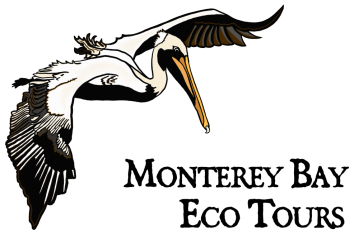BRANDT’S CORMORANTS: THE DARK-WINGED DIVERS OF MONTEREY BAY

Brandt’s cormorants are large, black seabirds that are common in Monterey Bay. They can be seen diving for fish in the shallow waters of the bay, or perched on rocks or pilings. Brandt’s cormorants are easily identifiable by their long, thin necks and hooked beaks. They are also known for their distinctive black plumage, which is often stained with rust-colored guano.
Brandt’s cormorants are one of the most abundant seabirds in Monterey Bay. They can be found year-round, but they are most common during the breeding season, which is from March to September. During this time, Brandt’s cormorants gather in large colonies to breed and raise their young.
One of the best places to see Brandt’s cormorants in Monterey Bay is on a wildlife tour with Monterey Bay Eco Tours. Our tours take you through the Elkhorn Slough, a protected estuary that is home to a variety of wildlife, including Brandt’s cormorants. On our tours, you will have the opportunity to see these birds up close and learn about their fascinating behavior.
In addition to seeing Brandt’s cormorants in the wild, you can also see them at the Monterey Bay Aquarium. The aquarium has a large exhibit that features these birds, and you can learn about their natural history and conservation status.
Did you know?
- A group of cormorants is called a flight or a gulp.
- Brandt’s cormorants are named after Johann Friedrich Brandt, a German naturalist who first described the species in 1837.
- Brandt’s cormorants are excellent divers. They can stay underwater for up to two minutes and dive to depths of up to 100 feet.
- Brandt’s cormorants are carnivores. They eat fish, squid, and other marine animals.
Book your tour today and see Brandt’s cormorants in their natural habitat!

Nurturing Bonds: A devoted Brandt’s Cormorant feeds its chick, showcasing the vivid blue throat that sets this species apart. A testament to the remarkable care and vibrant colors of nature’s avian families.
